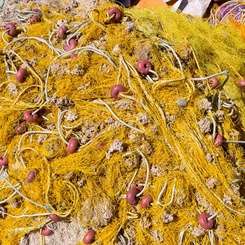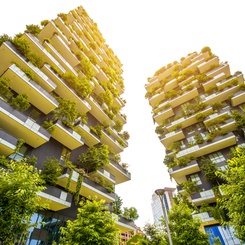On April 9th, Paris will host its annual marathon, welcoming tens of thousands of endurance athletes from around the world. Last year’s event, for example, featured over 57,000 participants… as well as almost half a million plastic bottles of water; 83,000 gels, fruit boosters and energy bars wrapped up in plastic; and 42,600 liters of isotonic and energy drinks served in little plastic and paper cups.
In fact, the Paris marathon is just one event amongst many hundreds scheduled around the world. In 2017 there are 816 marathons scheduled in the US alone! Together, they are likely producing countless tons of plastic waste.
Meanwhile, runners train for these events in local woodlands, forests, and city parks. These same natural environments provide event organizers with inexpensive venues. So, how could organizers and participants return the favor and protect the environments on which they so heavily rely?
Doing good, while doing well
First, the Paris marathon could learn from similar events around the world. The Athens marathon, for example, has introduced voluntary recycling initiatives and environmental awareness programs. The Chamonix marathon goes even further by making their races semi-autonomous, meaning they offer fewer aid stations and water refilling facilities rather than bottled water. The Royal Parks race in England uses recycled polyester from used water bottles to make its event T-shirts. Several Ironman triathlon events in the US have also partnered-up with NGOs to become more sustainable and eco-friendly.
Second, they could take advantage of frameworks provided by organizations like the United Nations Environmental Program and other associations and non-governmental organizations, which offer guidelines and recommendations for increasing the sustainability of these types of events. They provide suggestions like:
- Provide paperless registration and online race information;
- Provide low flow toilets and no-flow urinals, greywater recycling systems, and other efficient water technologies;
- Minimize packaging of products from Expo and race vendors;
- Minimize food and packaging waste and maximize composting and recycling;
- Provide free public transportation on race-day;
- Encourage participants to use camel bags and be semi-autonomous;
- Provide refilling stations for participants to refill their camel bags;
- Engage sponsors in providing sustainable products, services, and programs.
Best of all, by “greening” events like the Paris marathon, we’re making them more economical for both organizers and participants. Entry fees usually range between 40 and 100 Euro for marathons, and can reach up to 800 Euro for long-distance triathlons. But by saving money on bottles of water, for example, organizers may be able to pass operational savings on to participants. Indeed, lower entry fees can help make an event more competitive internationally.
Or, these savings could be reinvested and put towards promoting the event. Becoming known as a greener event might help organizers grab the attention of potential corporate sponsors who are looking to underscore their brand's commitment to sustainability.
Greening the Paris marathon means doing good – having a positive impact on the environment – while doing well – saving costs and increasing an events global competitiveness.









